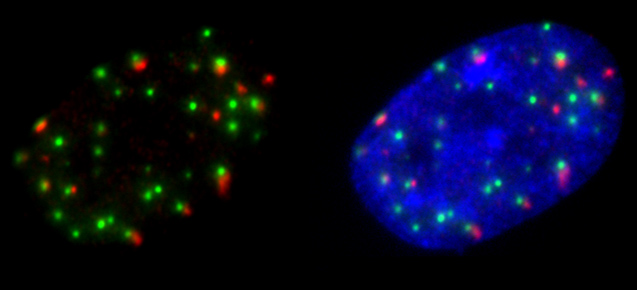Research
The innate immune system has evolved to provide the first line of defence against invading pathogens. We want to understand how pathogens are detected by this system, how this detection informs the immune system to best respond to the infection and how we can use this information to design more effective vaccines. DNA is particularly powerful stimulator of the innate immune system and both foreign and self-DNA can initiate an immune response when found to be in the wrong place. We are interested in the mechanisms by which this DNA is sensed and how this sensing results in interferon and cytokine production. DNA vaccines make use of the innate immunostimulatory properties of nucleic acid to aid in the generation of powerful adaptive immune responses to the encoded antigen. We would like to understand how to optimise the innate immune response to generate the best possible vaccination against specific pathogens.
We are also interested in how pathogens have overcome these innate immune mechanisms by developing their own potent inhibitors of the host signalling mechanisms. For example vaccinia virus encodes at least ten proteins which can inhibit the NF-kB pathway at various points. By studying the interaction between the host response and the immune evasion mechanisms of pathogens we can both further the understanding of our own immune system and discover new ways to fight infectious diseases.

Publications
Enhanced efficacy of vaccination with vaccinia virus in old vs. young mice
Evgeniya V. Shmeleva, Geoffrey L. Smith and Brian J. Ferguson
Frontiers in Immunology, Volume 10: 1780
LUBAC deficiency perturbs TLR3 signaling to cause immunodeficiency and autoinflammation
J Zinngrebe, E Rieser, L Taraborrelli, N Peltzer, T Hartwig, H Ren, I Kovács, C Endres, P Draber, M Darding, S von Karstedt, J Lemke, B Dome, M Bergmann , BJ Ferguson*, H Walczak*
J Experimental Medicine 2016
The Non-Homologous End Joining Protein PAXX Acts to Restrict HSV-1 Infection
Ben J. Trigg, Katharina B. Lauer, Paula Fernandes dos Santos, Heather Coleman, Gabriel Balmus, Daniel S. Mansur and Brian J. Ferguson
Viruses, Volume 9(11)
DNA-PK is a DNA sensor for IRF-3-dependent innate immunity
BJ Ferguson, DS Mansur, NE Peters, H Ren, GL Smith (2012) eLife Sciences 1
Vaccinia virus protein N2 is a nuclear IRF3 inhibitor that promotes virulence
BJ Ferguson, CTO Benfield, H Ren, VH Lee, GL Frazer, P Strnadova, RP Sumner, GL Smith (2013) Journal of General Virology, 94 (9), 2070-2081
A mechanism for induction of a hypoxic response by vaccinia virus
M Mazzon, NE Peters, C Loenarz, EM Krysztofinska, SWJ Ember, BJ Ferguson, GL Smith (2013) Proceedings of the National Academy of Sciences, 110 (30), 12444-12449
Poxvirus Targeting of E3 Ligase β-TrCP by Molecular Mimicry: A Mechanism to Inhibit NF-κB Activation and Promote Immune Evasion and Virulence
DS Mansur, CM de Motes, L Unterholzner, RP Sumner, BJ Ferguson, H Ren, P Strnadova, AG Bowie, GL Smith (2013) PLoS pathogens 9 (2), e1003183
PML depletion disrupts normal mammary gland development and skews the composition of the mammary luminal cell progenitor pool
W Li, BJ Ferguson, WT Khaled, M Tevendale, J Stingl, V Poli, T Rich, P Salomoni, CJ Watson (2013) Proceedings of the National Academy of Sciences 106 (12), 4725-4730



